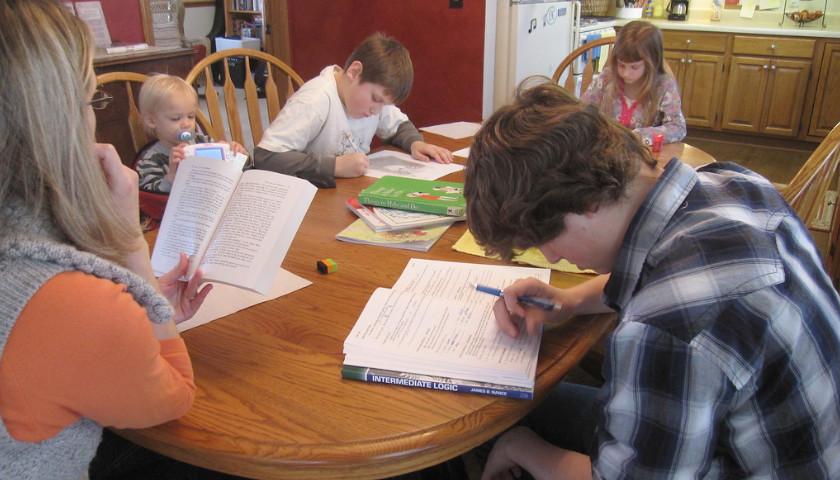by Francisco Zuniga
Recently, I asked my fifth graders if they enjoyed writing in cursive. Students at the all-boys Catholic school where I work start training in cursive penmanship in third grade, so my students had been practicing it for the better part of three years. I expected them to say that it is boring, that they do not like it, but they all said that they preferred cursive to printing. One boy explained that it allows him to develop his ideas more easily. Another one liked the way the strokes of the pencil obey the natural movement of his hand and shoulder. Most surprising of all: They all find writing in cursive fun.
Cursive penmanship is a dying art. History professor and former president of Harvard Drew Gilpin Faust wrote an essay in 2022 lamenting that Generation Z never learned cursive. She acknowledges that “the decline in cursive seems inevitable. Writing is, after all, a technology, and most technologies are sooner or later surpassed and replaced.”
Indeed, today, schools teach students a combination of print and word processing. The use of computers and tablets is considered beneficial to students mainly because of the ease of access to information and the ability to produce immediate results.
But expediency tends to alienate us from the essential parts of our natures. In the case of word processing, the physical side of writing is changed and no longer facilitates a student’s fully engaging with his ideas. The device becomes an unnecessary intermediary between the child’s brain and his written words.
As an act and an art, writing is not just a mental process but allows us to bring the mental into the physical plane as well. When children learn cursive, they learn how to form words and, later, ideas, with their fingers, hands, and arms. By holding their pencils in a specific way, moving their wrists in a particular way, and following a certain pattern of strokes and loops, students give physical expression to their thoughts using their own bodies.
As students create one cursive letter after another, their writing allows for the natural flow of their thoughts. In contrast, printing, the abrupt and constant lifting of the pencil between letters is cumbersome and unlike the natural flow of our speech patterns. The same is true for typing on a keyboard, no matter how fast we can type.
Cursive opens a way to creative and personal expression that was once extremely valued. In Colonial America, there were whole schools devoted to teaching writing, as penmanship was highly regarded, and as the cursive we know today was standardized in the late 18th and early 19th centuries, handwriting courses were being established at other schools across the U.S. Cursive was—and remains—a combination of uniformity of method and creativity of expression.
This combination is exactly what children in the lower grades need: Training in cursive provides them with routine, while making the work of writing creative and artistic. It gives children a chance to show off their talents and display their strengths to parents and teachers. In turn, the praise they receive gives them confidence to challenge themselves to try something new or solve problems with patience and perseverance.
Along the way, children also reveal their personalities when they exhibit their good work. In so doing, they develop as individuals and learn to express themselves freely and openly. Pope Benedict XVI once said, “Music is an expression of spirit, a place inside the person, created for all that is true, good, and beautiful.” The same could be said about cursive writing. It is an art form, and it is beautiful. It is aesthetically pleasing. Teachers take their students to an art gallery because they want them to develop a love for the beauty of art. They cultivate a sensibility to the natural world by taking their classes to a zoo or a natural history museum. By teaching cursive, teachers generate a sense of the true, the good, and the beautiful in students through a medium that will be theirs for the rest of their lives.
This world in which many of us grew up is disappearing, however. We are losing the sense of meaning in life. We need to defend those things that cultivate perseverance, develop the mind and the body, give a sense of shared purpose while encouraging individual expression, and teach us to love beauty. Teaching our children cursive is an invaluable way to start this work.
– – –
Francisco Zuniga is a contributor to Intellectual Takeout.








